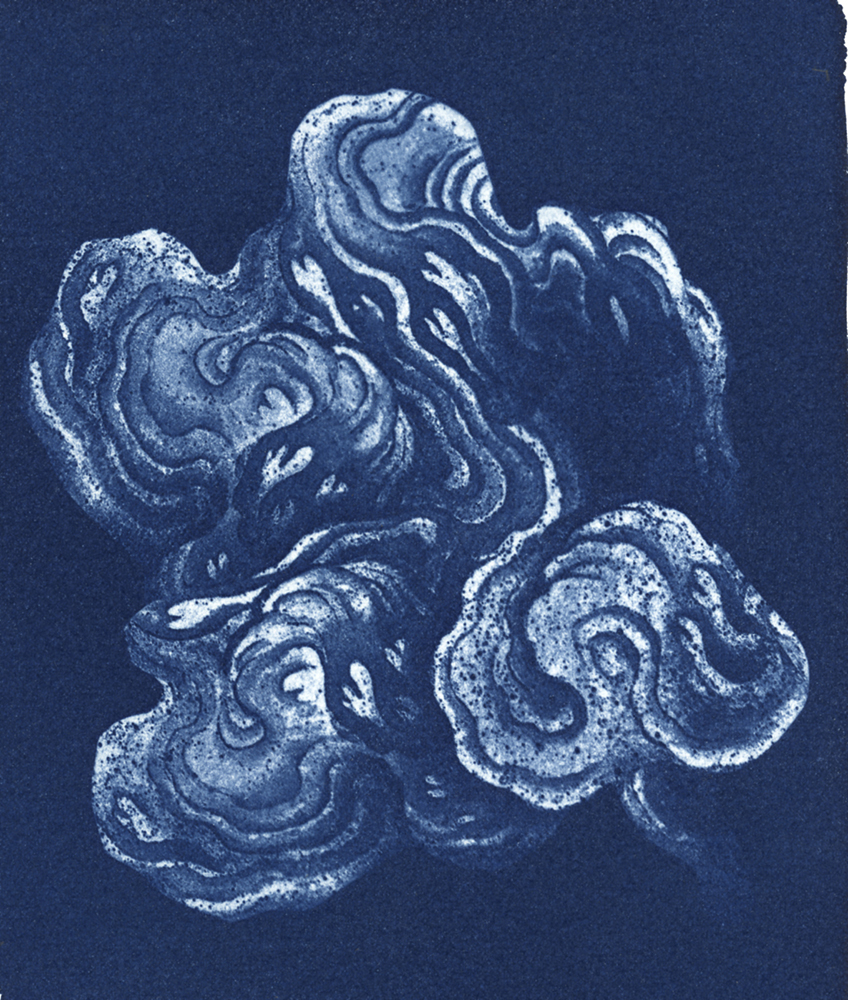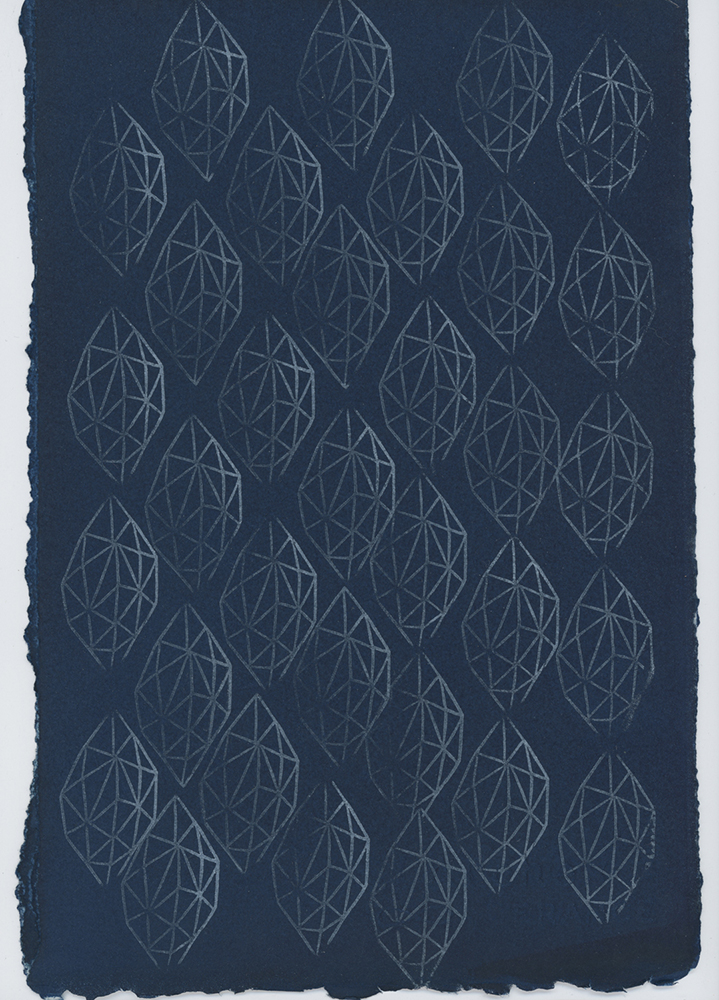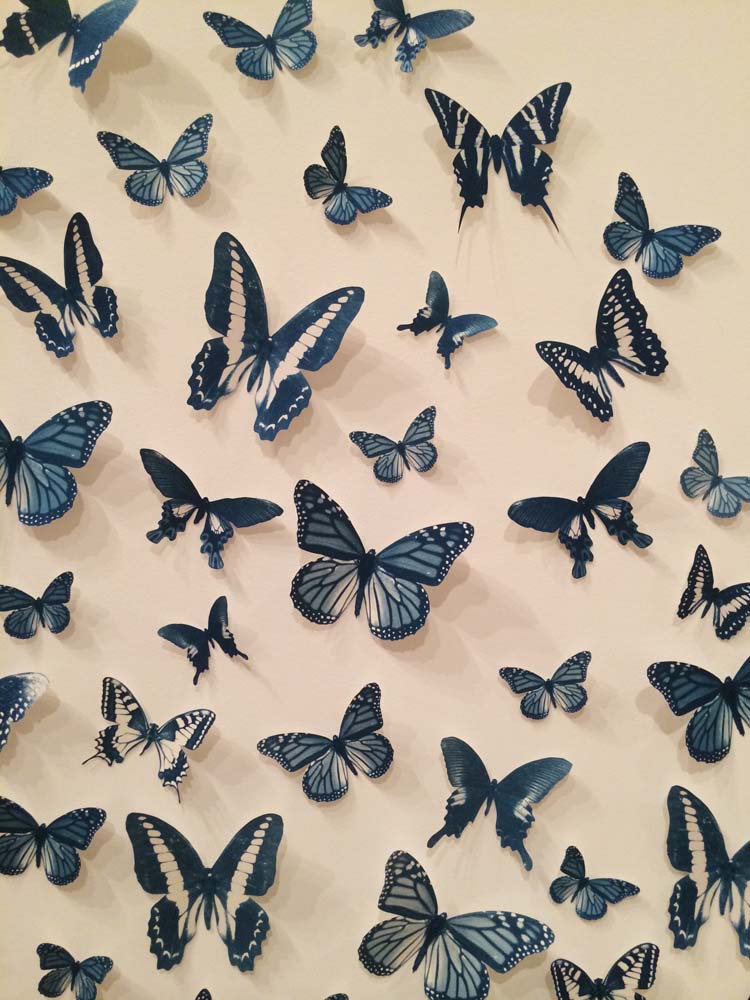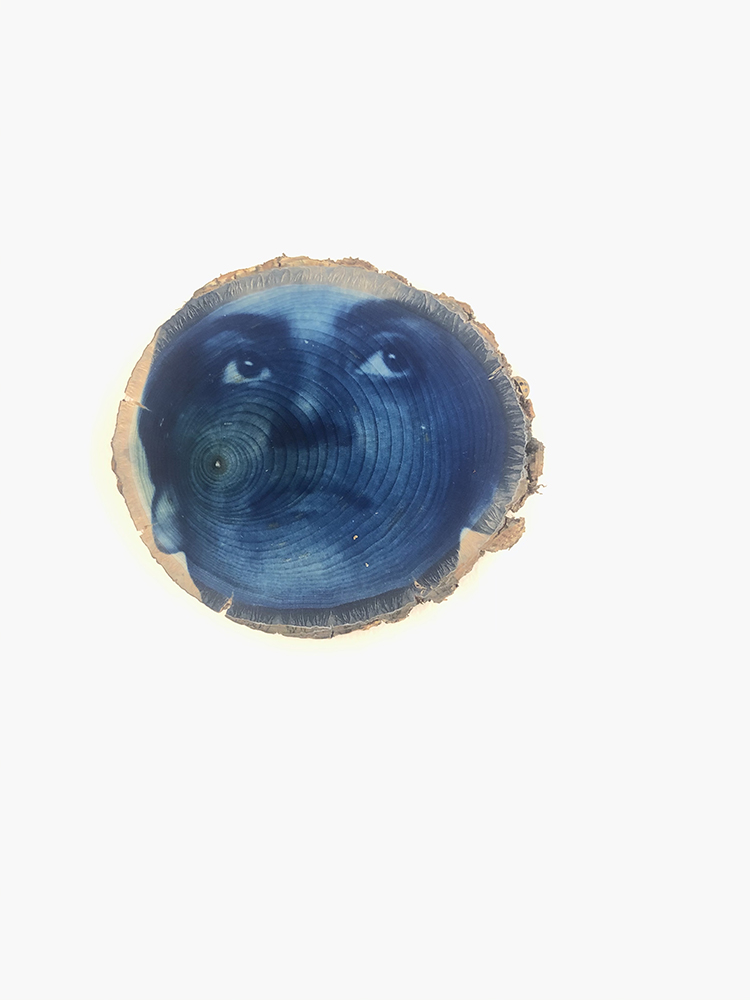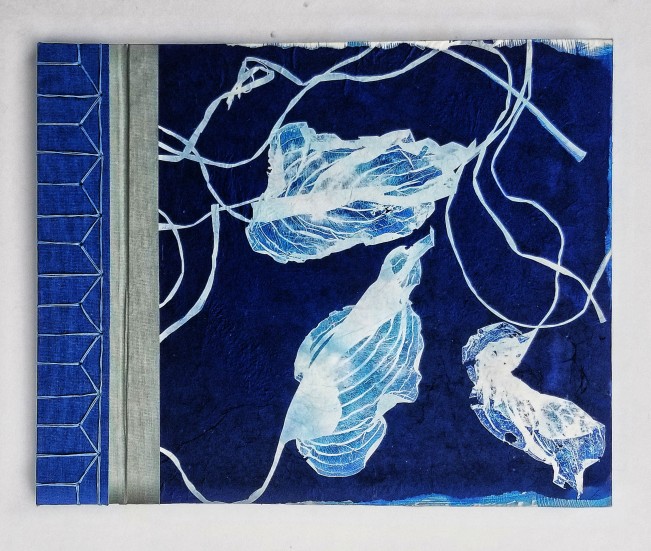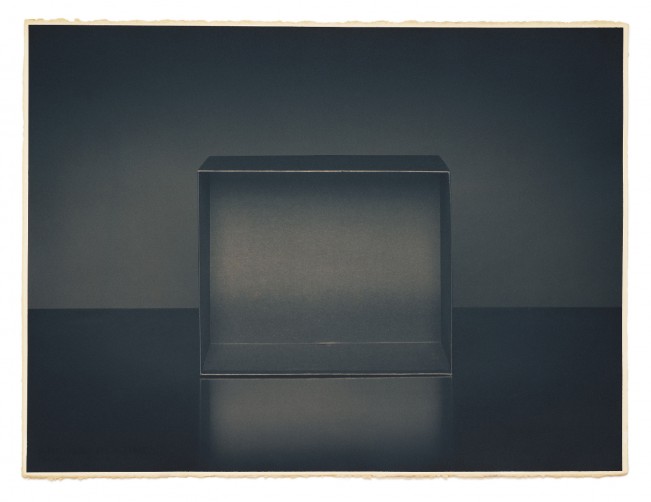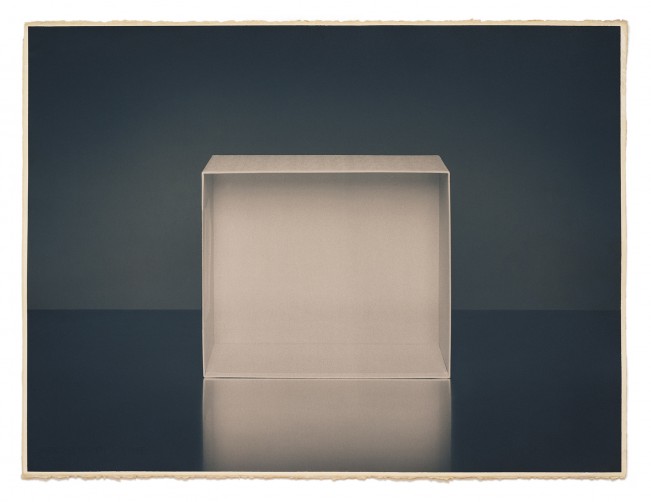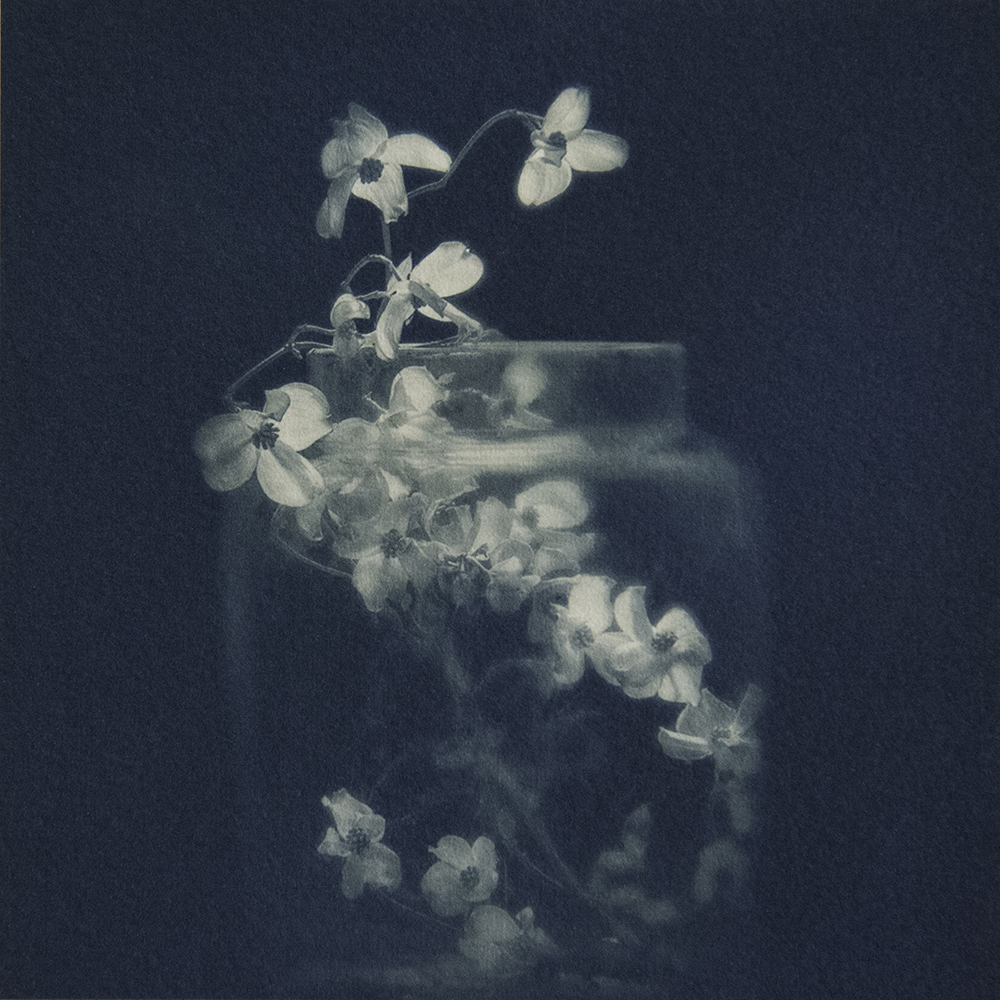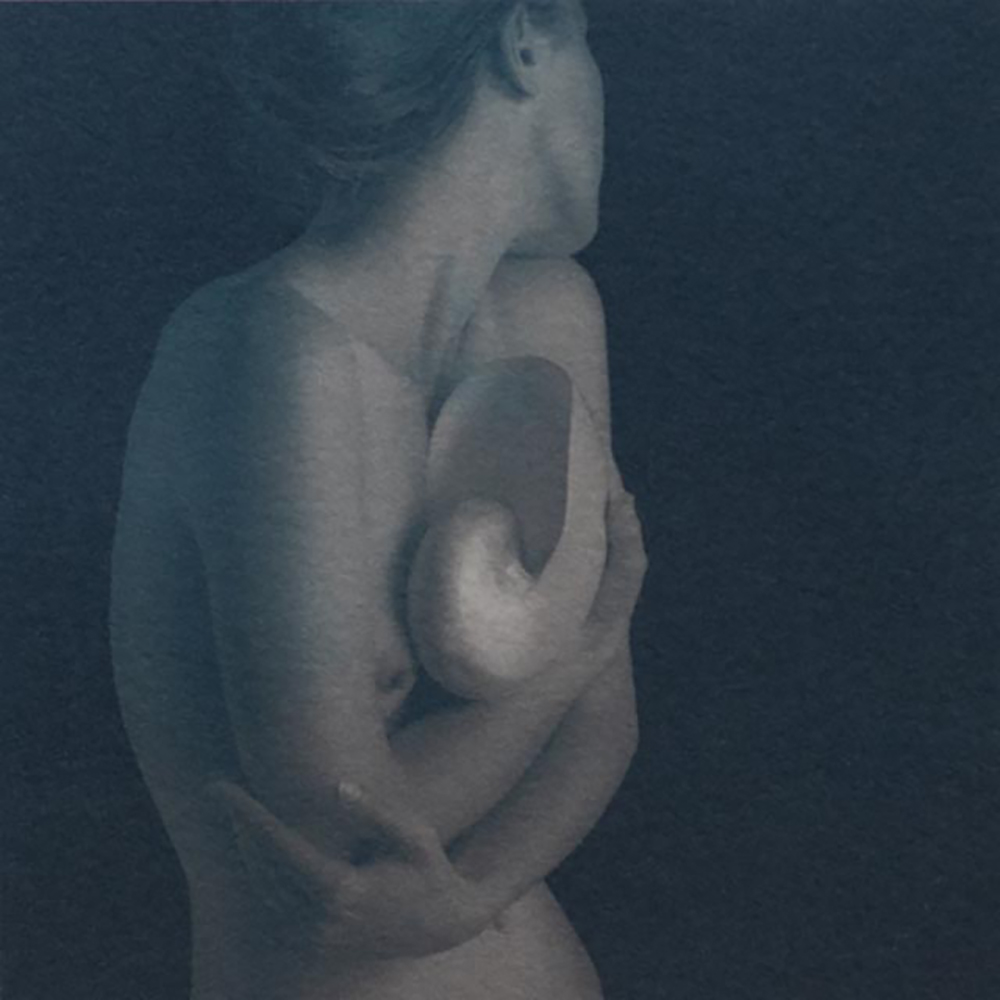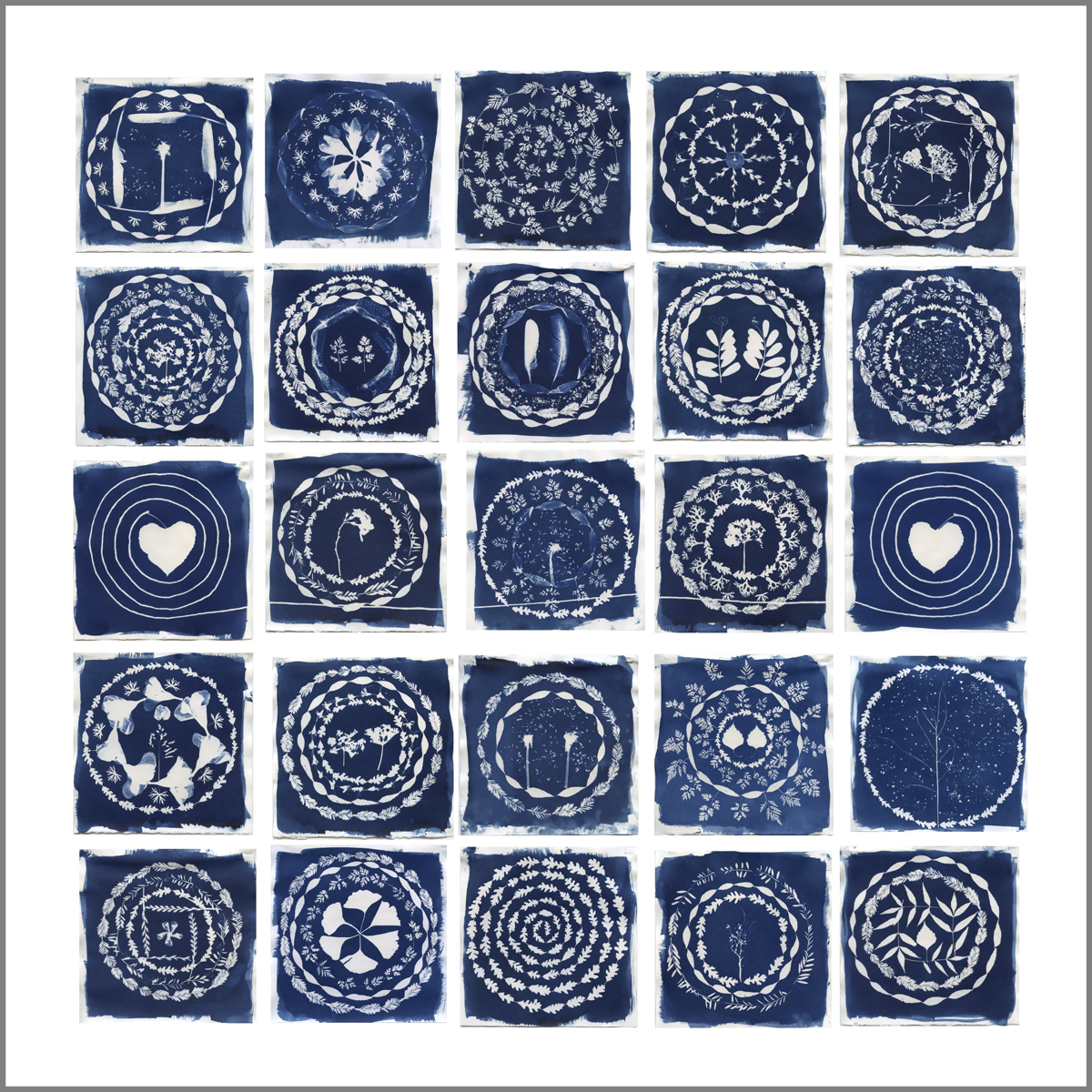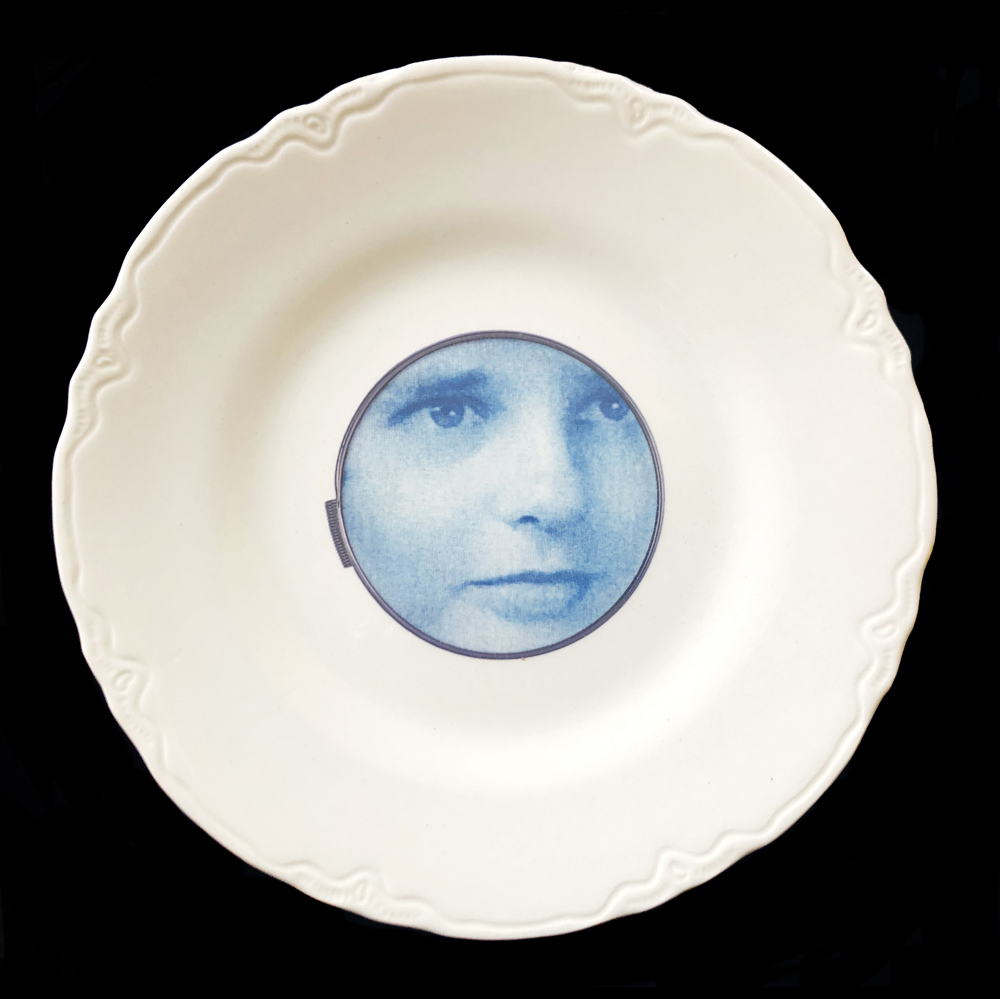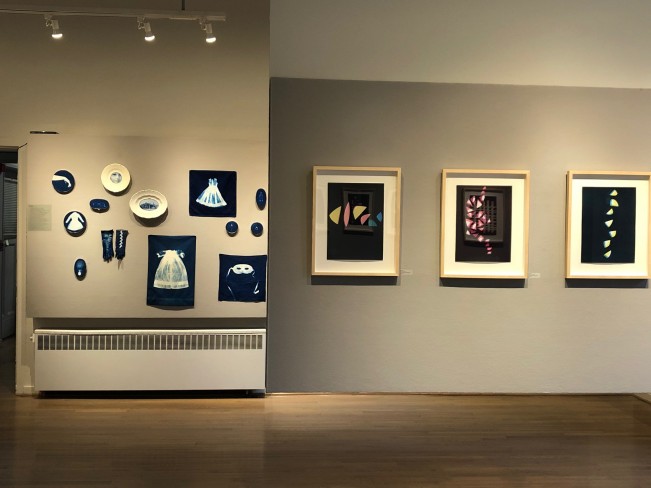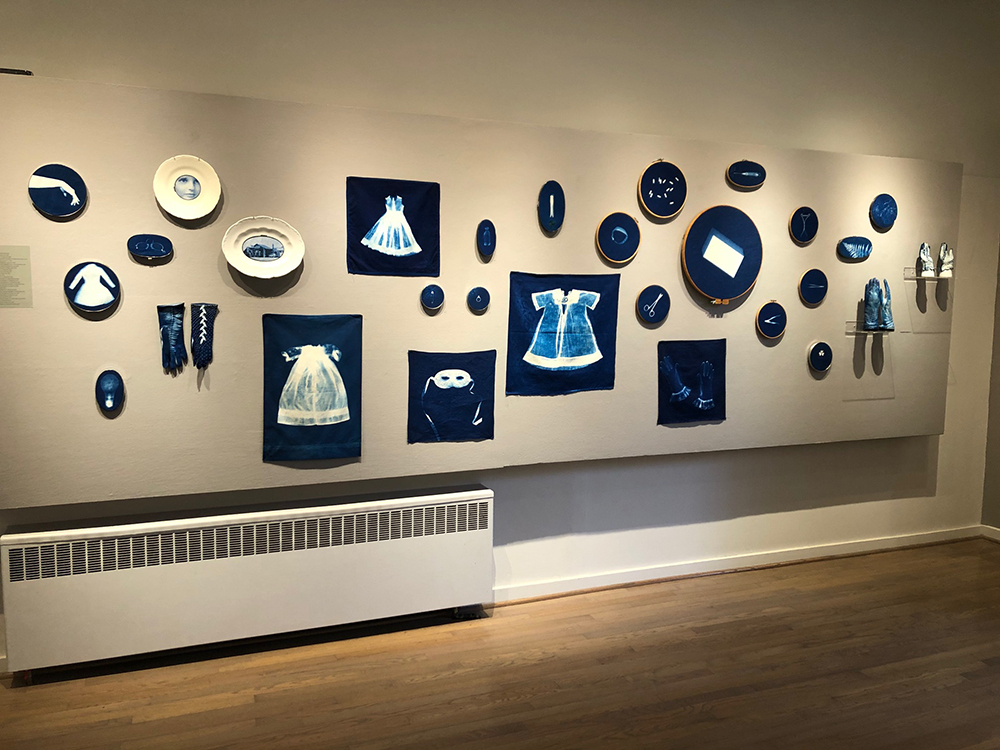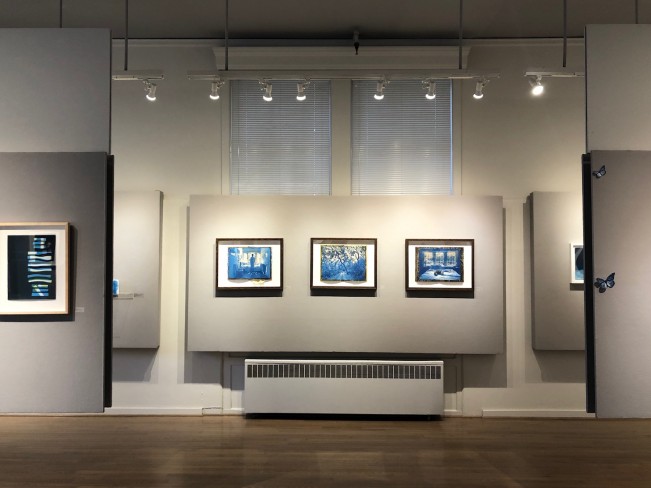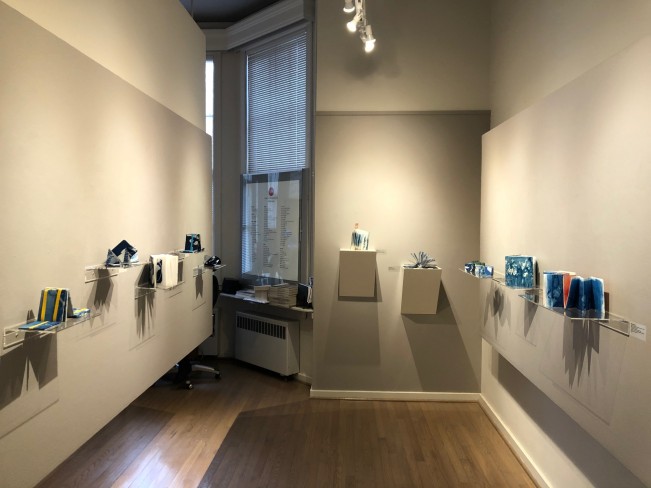Winter Blues: Contemporary Cyanotypes at the Center for Photographic Art
The Center for Photographic Arts in Carmel, CA recently opened the exhibition, Winter Blues: Contemporary Cyanotypes, curated by Center Director Ann Jastrab. Running through April 5th, the exhibition features the work of Diana Bloomfield, J.M. Golding, Brenton Hamilton, Barbara Hazen, Max Kellenberger, Heidi Kirkpatrick, Meghann Riepenhoff, Paula Riff, Leah Sobsey, and Brian Taylor.
Curator and Director Ann Jastrab shares her vision and impetus for the exhibition:
It really started 27 years ago, in graduate school in an historical process class. I’d already fallen in love with a little cherrywood Wista and hadn’t yet fallen under the spell of platinum printing. And here was this process, vibrant sapphire blue if you wanted it, deep indigo blue if you could manage it, sublime reds and pinks and browns and oranges if you were brave enough to experiment, and it was pennies per print: the cyanotype. I went on to the Maine Photographic Workshops and assisted Christopher James making his giant cyanotype sheets for his alternative process workshops (there’s many a blue darkroom to be found on that coast) and then there was my colleague, Brenton Hamilton, both of us resident faculty, and him re-inventing the cyanotype process late at night in his studio, long after our day of teaching was done.
We watched the seasons change, the ocean freeze, the ships locked in ice in Rockport harbor, and he wouldn’t slow down. I struggled with the real urge to hibernate, to move at a different pace, to put on more layers and just survive until the spring thaw. But not Brenton. Surrounded by humidifiers filling the air with warm steam, he worked away like a mad scientist. I’d ask him about his bathtub stained blue and he’d just smile and return to his work.
Brenton, a master of the 1840s cyanotype process, chooses this antique medium to render his one-of-a-kind dreamlike visions in an equally unique and intense hue, mirroring the ocean outside his studio window and the blue-black depths of the night sky in Maine. I’ve still never seen another cyanotype that color.
When I learned that his monograph, Blue Idyll: Cyanotypes and Dreams, was being published by Schilt, I thought, the Blue Poet at last has his book and it’s time for an exhibition.
Not ironically, one of our students from the early days in Maine is also in this show, Leah Sobsey. Her residency at the Grand Canyon and the long days of bright skies brought her to the cyanotype and brings us a swarm of 600 butterflies.
These years have also brought into my field of vision, the large waves breaking on the coated papers of Meghann Riepenhoff, one time artist-in-residence at RayKo Photo Center, now Guggenheim fellow and art star.
I’ve also been blessed to discover the work of Paula Riff, whom I met nearly a decade ago and held her first cyanotype photograms of her mother’s ashes in my hands. And now Paula has exploded with creativity and her cut-paper cyanotype and gum prints are like nothing anyone has ever seen. Ever.
I also got to unfold the precious books of Diana Bloomfield. It was like Christmas. Or magic. Or both. I still hold my breath when I think of their fragility and beauty, and yet here they are, the most unique books you’ve ever seen, perched on shelves to make you tremble.
There are also the luminous shoe boxes of Max Kellenberger. How can they emit light? How? It is more magic. How can this process, one of the first photographic processes, have such inherent wizardry and how did Max harness it?
And speaking of magic or alchemy really, I saw Barbara Hazen’s tiny nudes, an ode to women and strength, cyanotypes with platinum over them, sublime in their beauty, chilling in their darkness. She has combined my two favorite historical processes and created her own language, also photographing still lifes that reach into her past and echo her future.
I have been watching J.M. Golding’s work for years, having shown her in multiple exhibitions in the Bay Area, but her new obsession is the cyanotype and the mandala. The grid in this exhibition is just a fraction of her botanical work, carefully laid out, carefully built, beautifully executed, something impermanent made permanent. A nod to Anna Atkins and a nod to dreams.
I once showed an installation of Heidi Kirkpatrick’s works, cyanotypes and sculptures, winding their way up the wall. This too was magic. And now I have her images from The Art of Medicine, a slightly different direction from her work about family and history and love and loss, but I feel the struggle and the emotion in the pictures nonetheless. For me, it is that Kleenex box…I see a matching photogram of tears somewhere.
And last but not least, Brian Taylor has been on a journey, strangely enough to the island that Brenton Hamilton did his graduate work on 30 years earlier. It’s a circle, a mandala, neither could have known this link. Now in retirement, Brian finally has time to focus on his work, travel to lush green islands, and most importantly, reclaim his studio. There he has discovered that the straight cyanotype is actually not a simple process, but one full of surprises and rewards. There’s not one color of blue, not one shade when toned, not one thing absolutely predictable. All the artists will tell you. Some of them will share their secrets. Most of them will not.
In this digital age, it’s important sometimes to step back 178 years or so and make some slow pictures and be inspired to create images in a different way. And that is exactly what these ten contemporary cyanotypists have done. -Ann Jastrab
Posts on Lenscratch may not be reproduced without the permission of the Lenscratch staff and the photographer.
Recommended
-
Ragne Kristine Sigmond: Portraits of Painterly LightDecember 2nd, 2025
-
Mary Pat Reeve: Illuminating the NightDecember 1st, 2025
-
Ricardo Miguel Hernández: When the memory turns to dust and Beyond PainNovember 28th, 2025
-
Pamela Landau Connolly: Columbus DriveNovember 26th, 2025
-
MATERNAL LEGACIES: OUR MOTHERS OURSELVES EXHIBITIONNovember 20th, 2025



